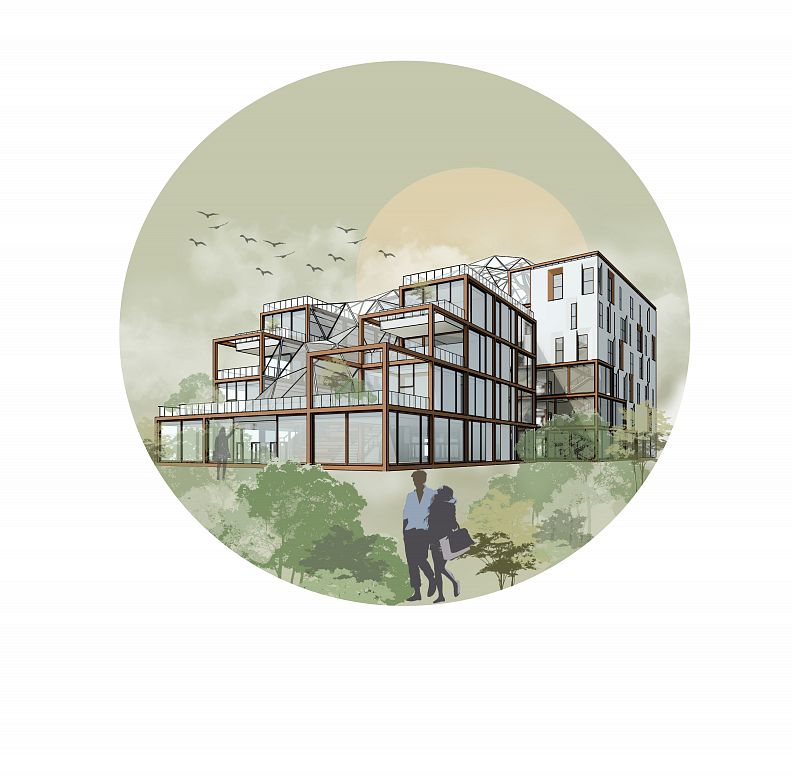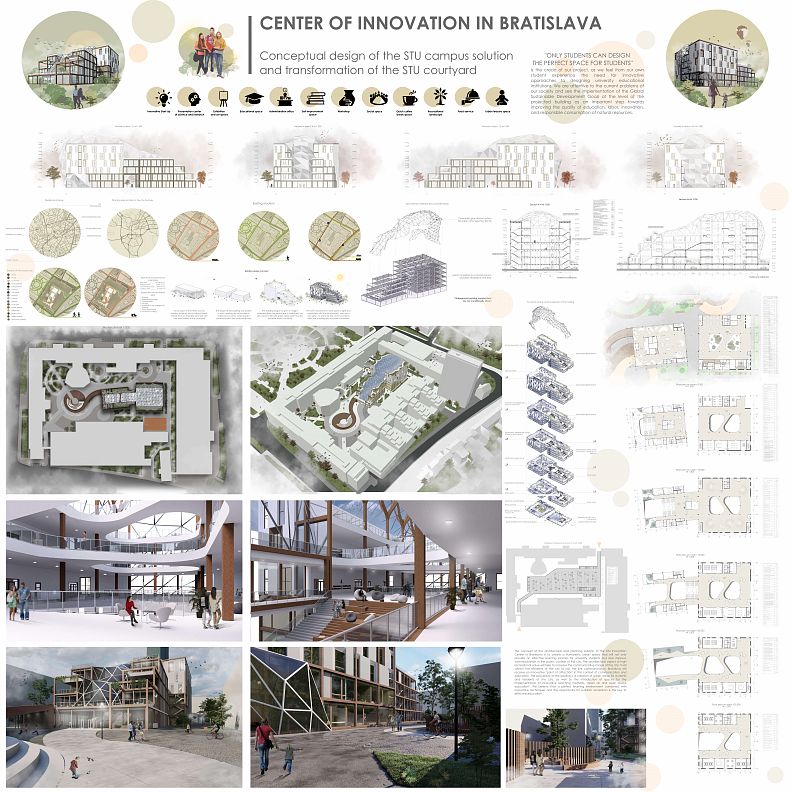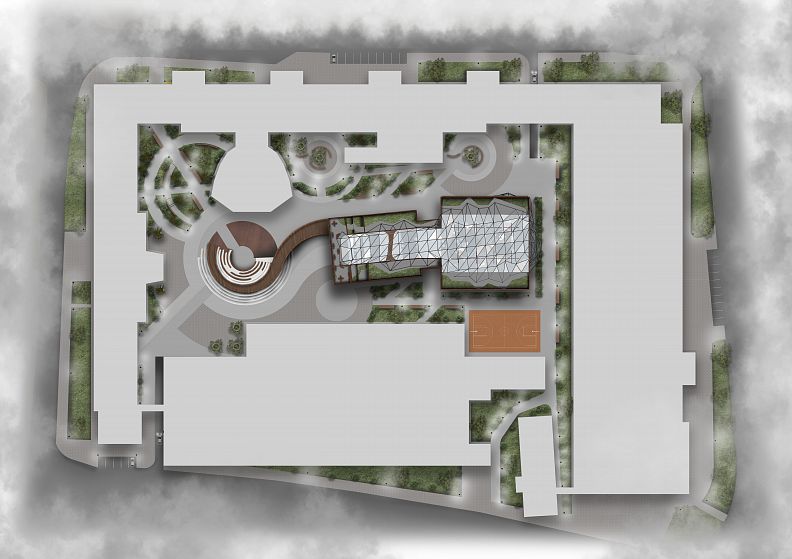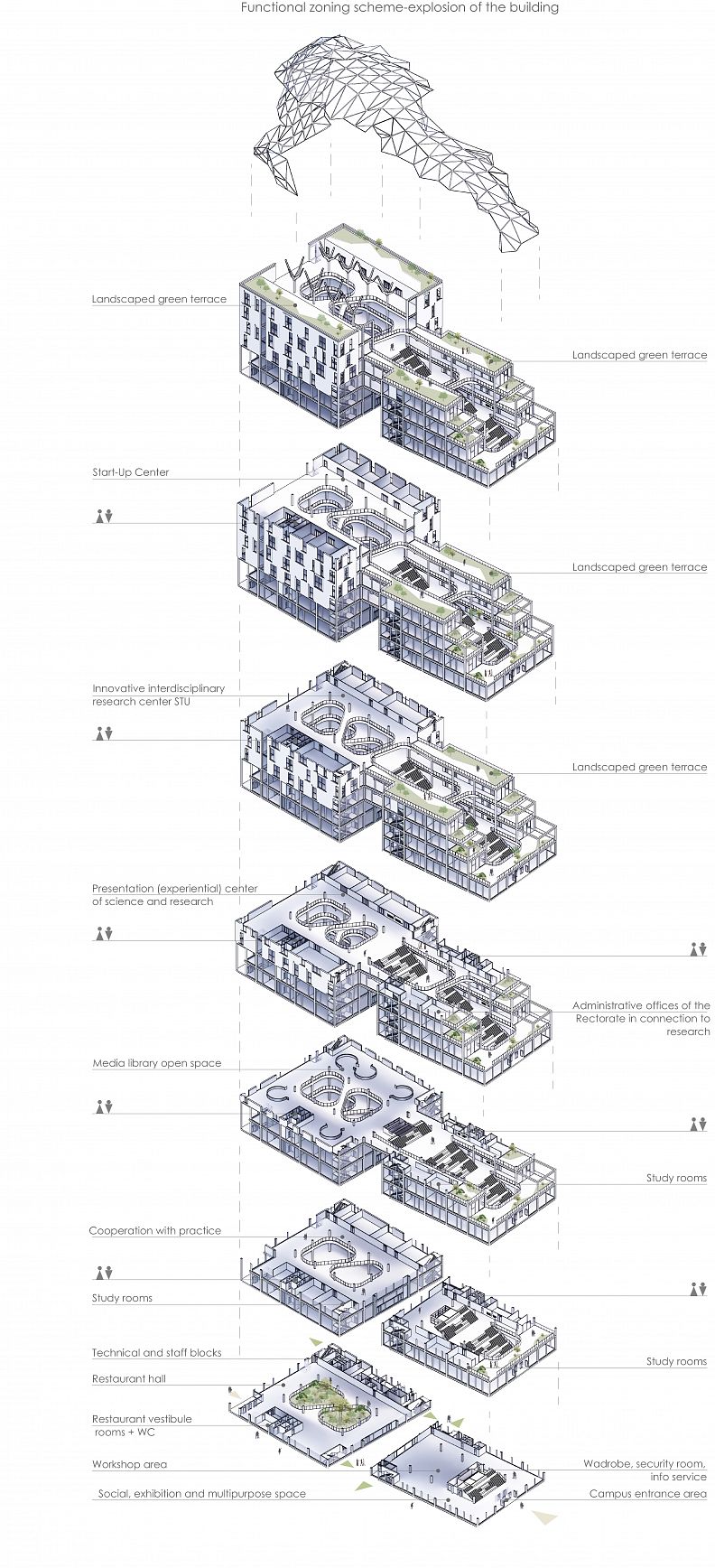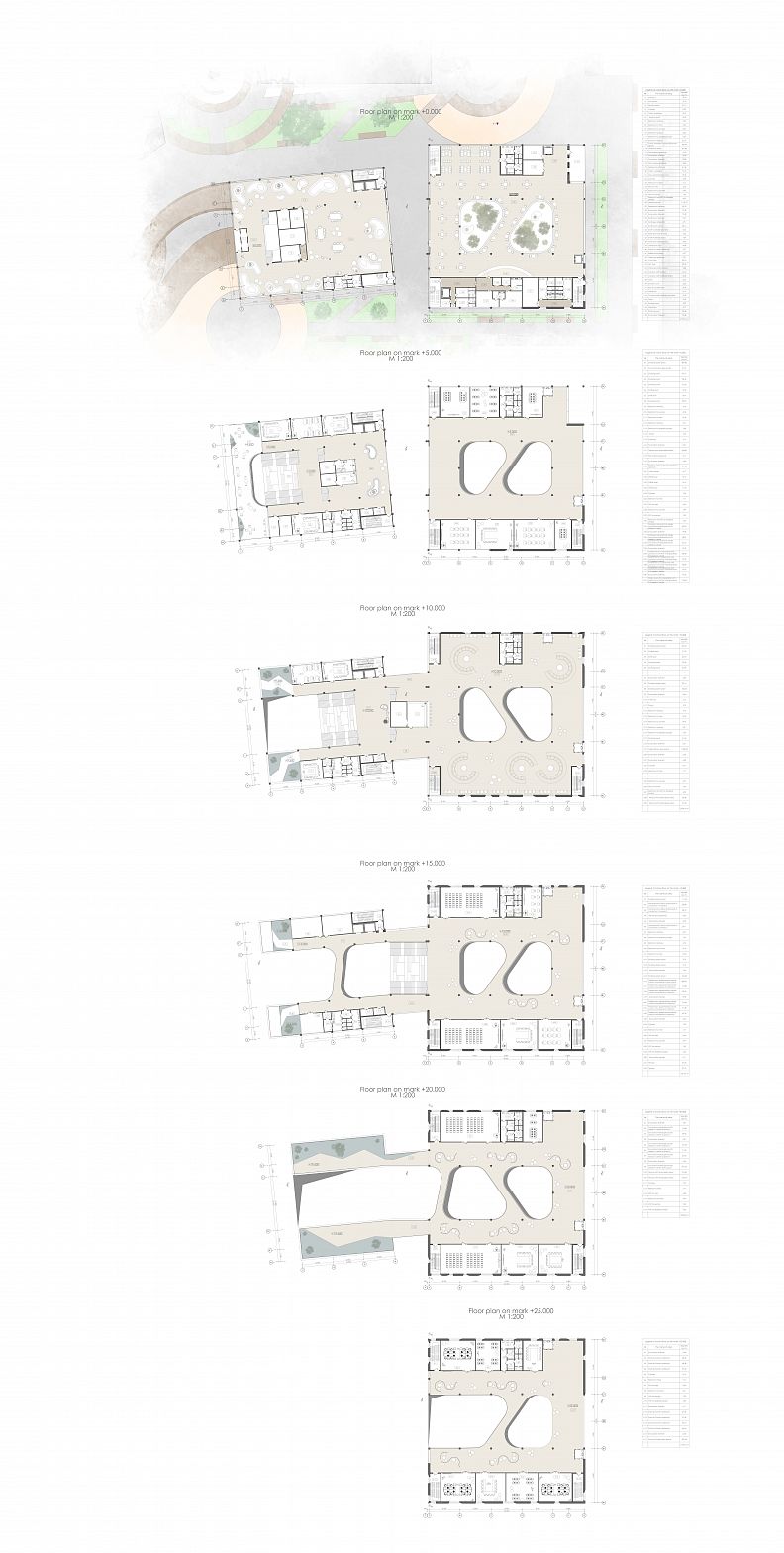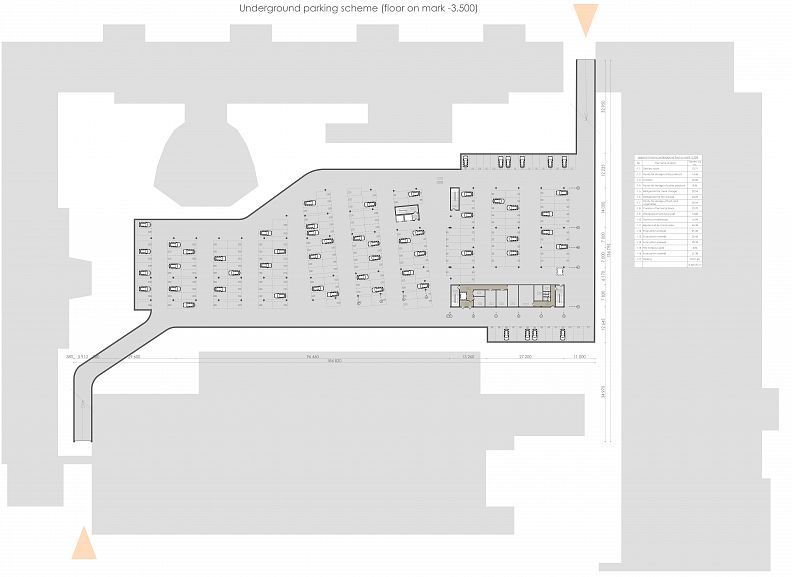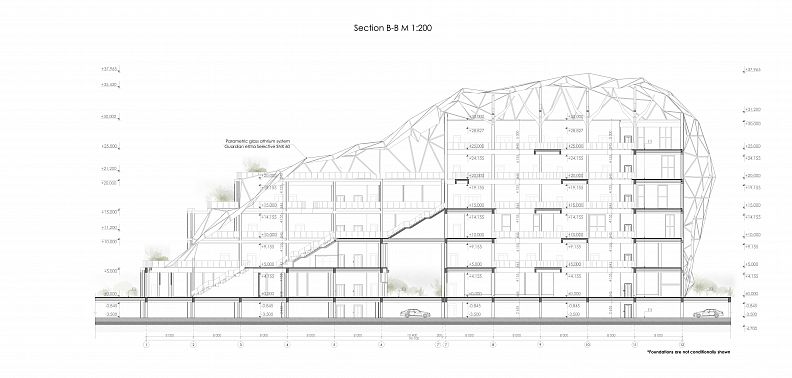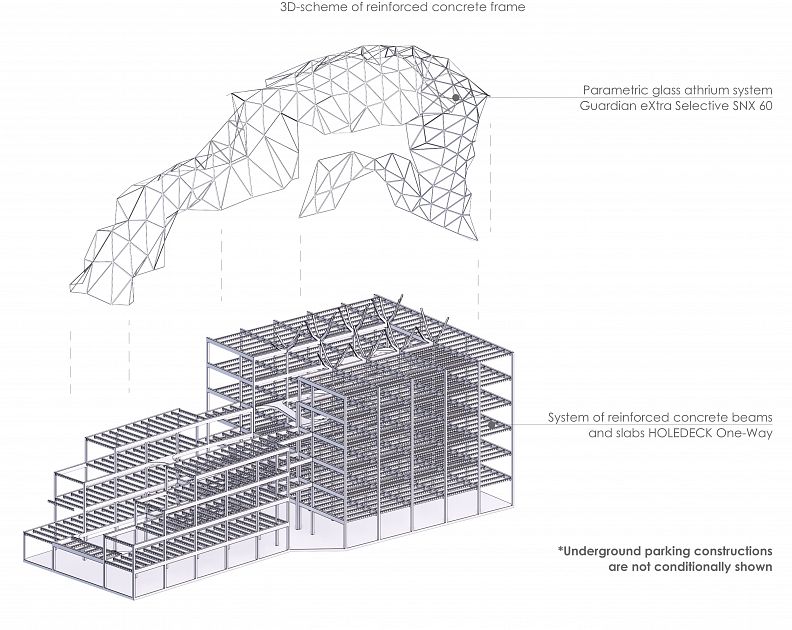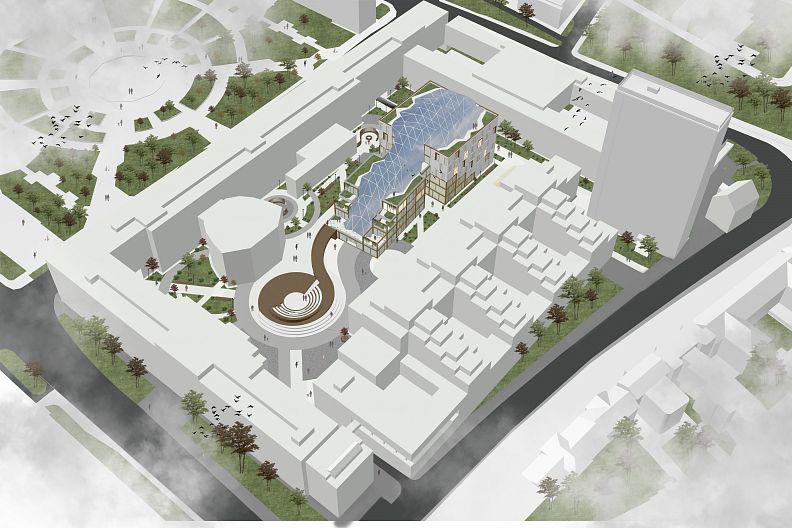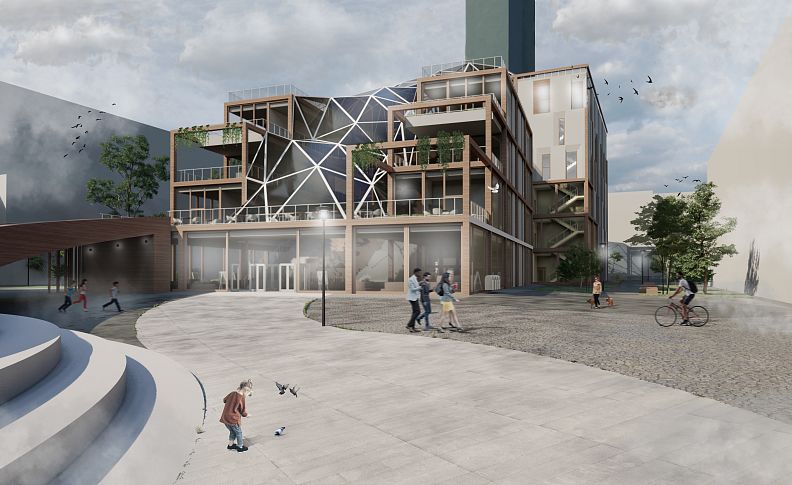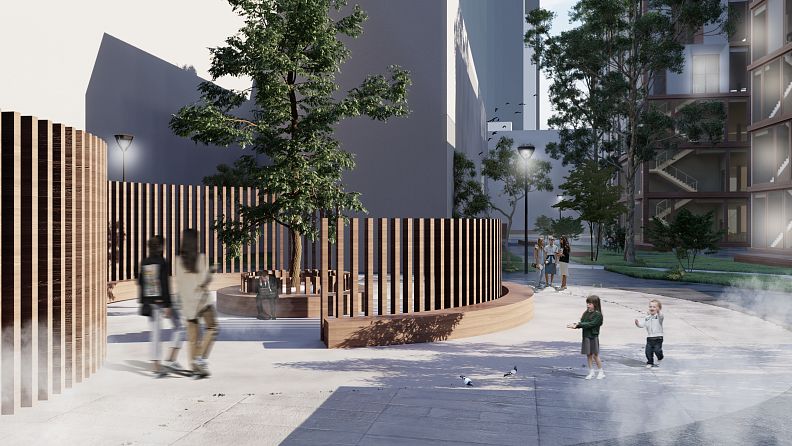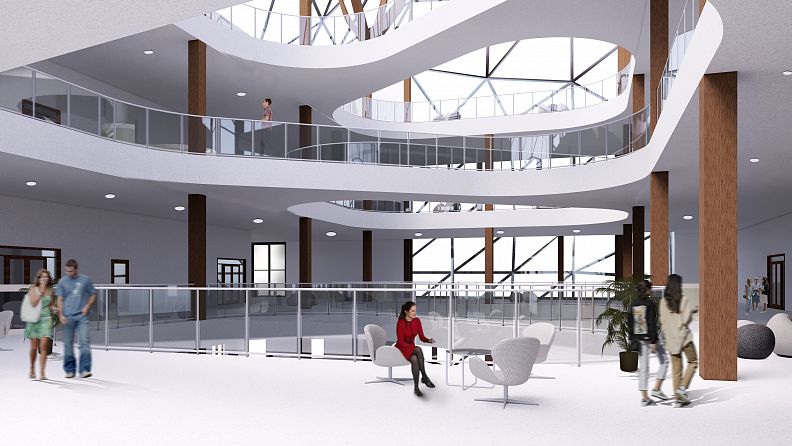CENTER OF INNOVATION IN BRATISLAVA

Project idea
"Only students can design the perfect space for students" is the credo of our project, as we feel from our own student experience the need for innovative approaches to designing university educational institutions. We are attentive to the current problems of our society and see the implementation of the Global Sustainable Development Goals at the level of the projected building as an important step towards improving the quality of education, labor, innovation, and responsible consumption of natural resources.
The concept of the architectural and planning solution of the STU Innovation Center in Bratislava is to create a humanistic urban space that will not only provide an effective learning process for university students, but also improve communication in the public context of the city. The architectural object of high recreational value will help to increase the communicative image of the city; it will attract the residents of the city to join the live communication. Bratislava will receive an innovative "point of attraction" in the context of communication and education. The peculiarity of the solution is a creation of green areas for students and residents of the city, as well as the introduction of spaces for the implementation of innovative teaching methods, "open air and open space education". We believe that a perfect learning environment combined with innovative techniques and the opportunity for outdoor recreation is the key to effective education.
Co-authors:
The project was created with the support of teachers (Institute of Architecture and Design, National University "Lviv Polytechnic") - Volodymyr Babiak (curator of the architectural part) and Leonid Vozniuk (curator of the structural part).
Project description
The architectural and planning structure is based on the division of functional zones:
- Educational;
- Science and Research (Innovative interdisciplinary research center STU, startup center, cooperation with practice, Presentation (experiential) center of science and research)
- Administrative offices of the Rectorate in connection to research
- Public library (Media library, Social multipurpose space, cooperation with practice)
- Foodservice (Catering, restaurant, coffee point)
- Art space (Workshops, exhibition space).
A certain separation of functions allows us to effectively distribute the flow of visitors, employees and students, but at the same time to promote effective communication of all space users. Public and narrow educational functions are intertwined; they are creating a harmonious combination. The designed building has a rather large communicative open space, which is a kind of unifying element that enhances the integration of public function in the university campus.
Technical information
For reasons of efficiency, durability, and economic feasibility, this structure is designed in a reinforced concrete frame, which will provide reliable rigidity and exceptional aesthetics. In the case of our building, the reinforced concrete frame helped to constructively solve the areas of atrium spans, which the three-dimensional shape of the building provides. The HOLEDECK system of plates and joists is offered for the creation of the support frame which thanks to innovative design is more constructively reliable and economically favorable decision.
For efficient ergonomics of the building, as well as effective accumulation of light in a certain period of the day and season - the building block is designed at a certain angle.
In order to compensate for terrestrial landscaping, we used an extensive green roof for terraces and roofs as an alternative that provides a comfortable microclimate, reduces the load on the drainage system, and does not require special care.
The use of a semi-structural system of facades glazing emphasizes our desire for innovative solutions. The variability of the filler of double-glazed windows and energy-saving spraying of glass allow achieving the desired energy and heat efficiency. A large amount of glazing is not a problem because modern materials of heat-saving glass with a special coating on the basis of metals serve as a kind of sun protection and help reduce the cost of heating in winter and air conditioning in summer. The parametric glazing of facades and atriums not only contributes to effective insolation and light balance, but also has an exceptional aesthetic effect.
